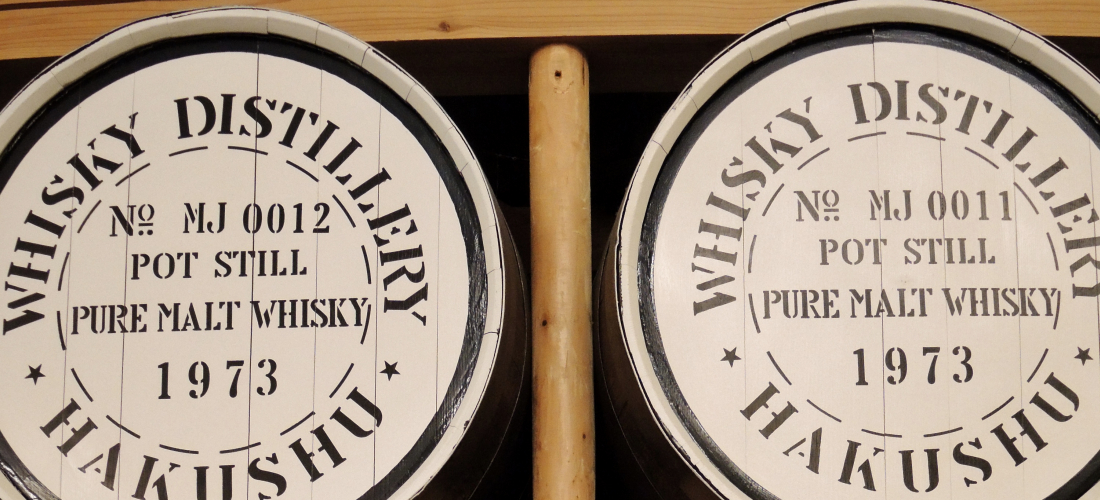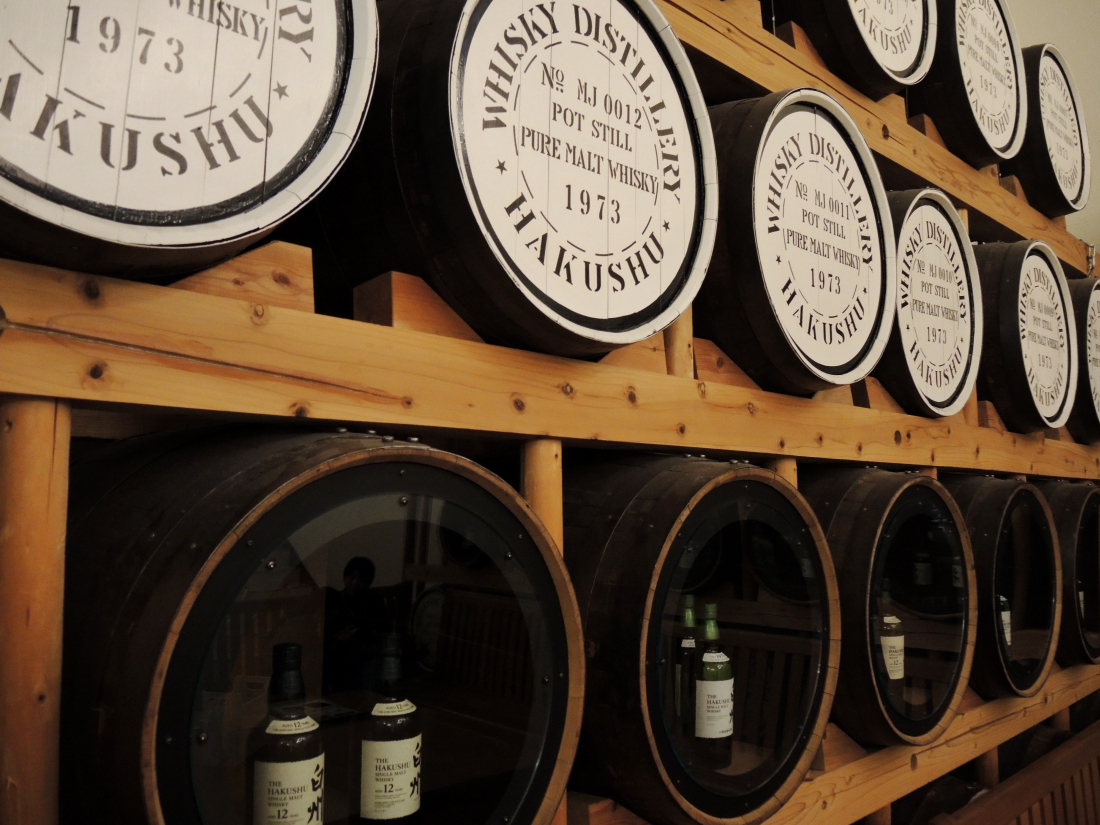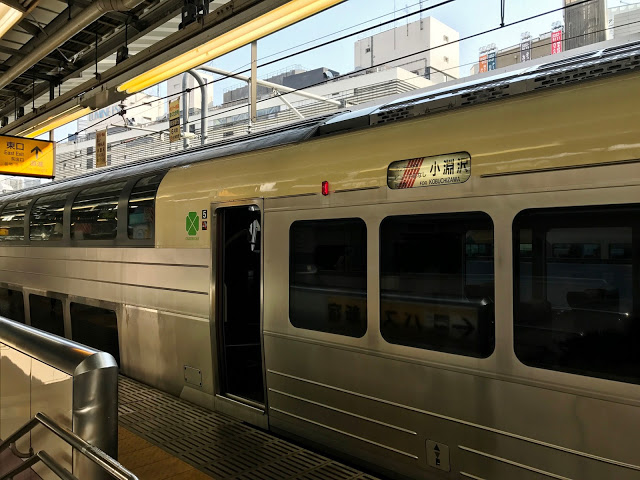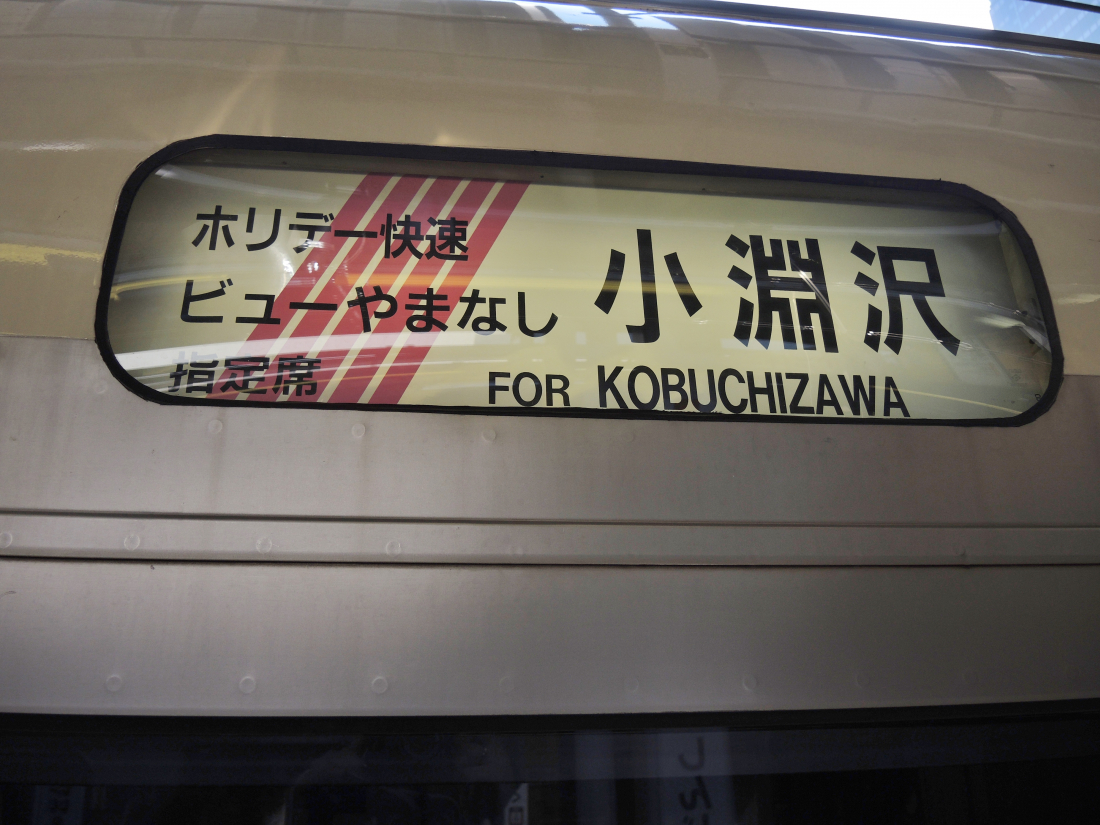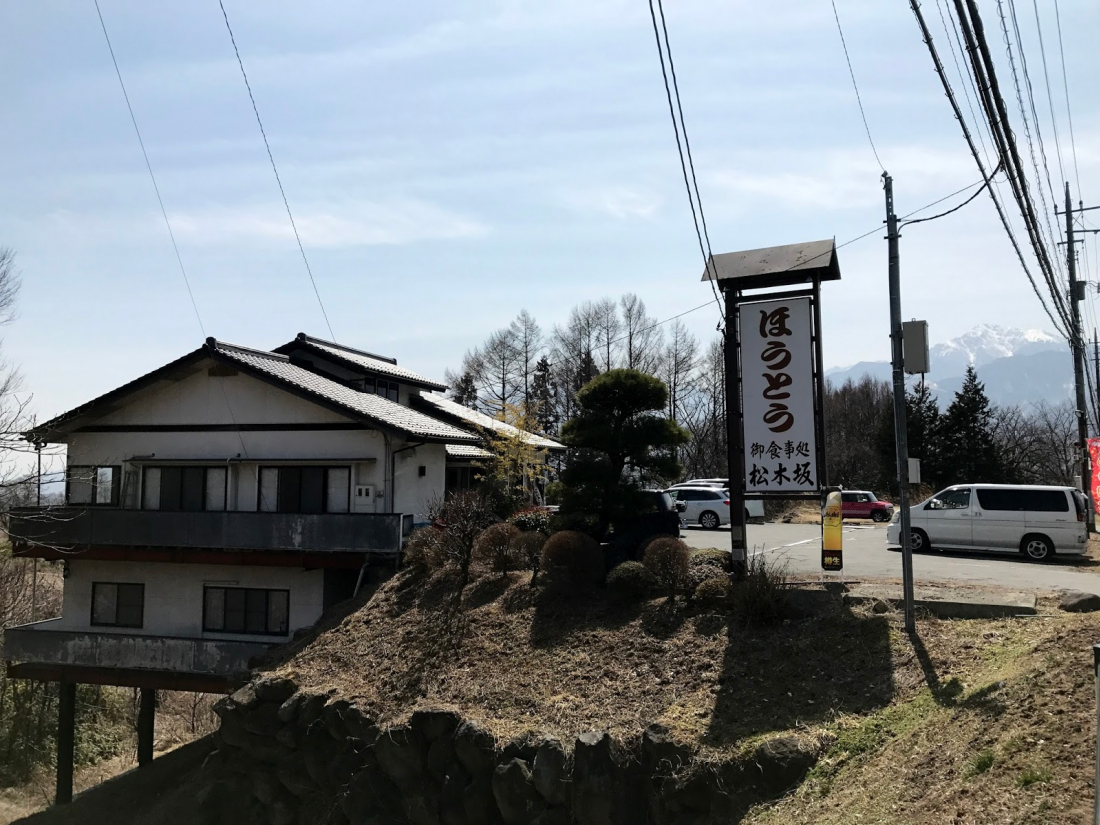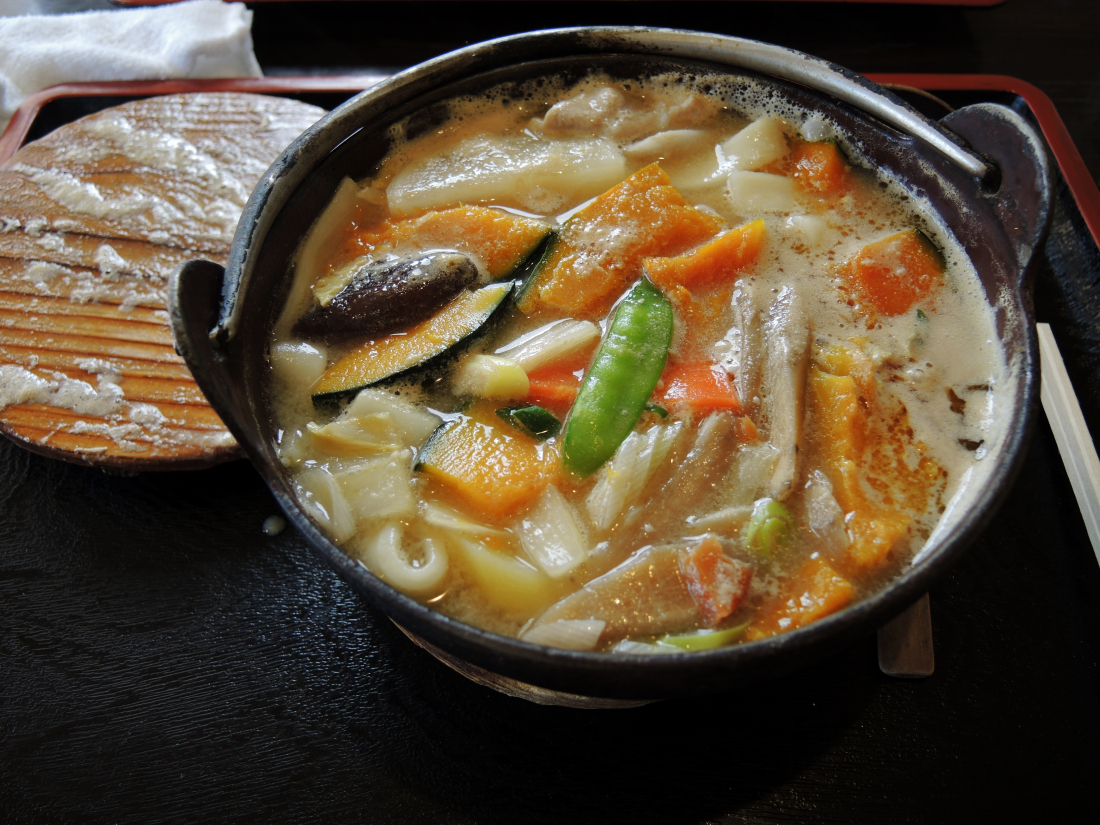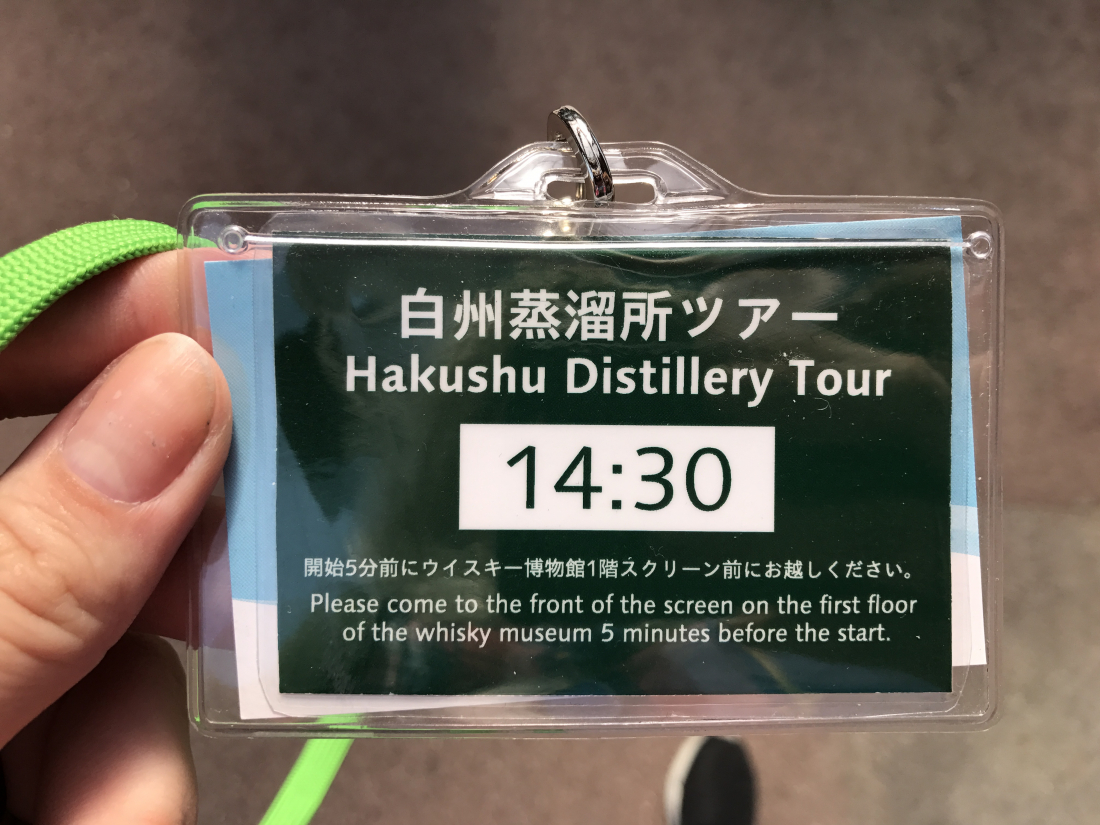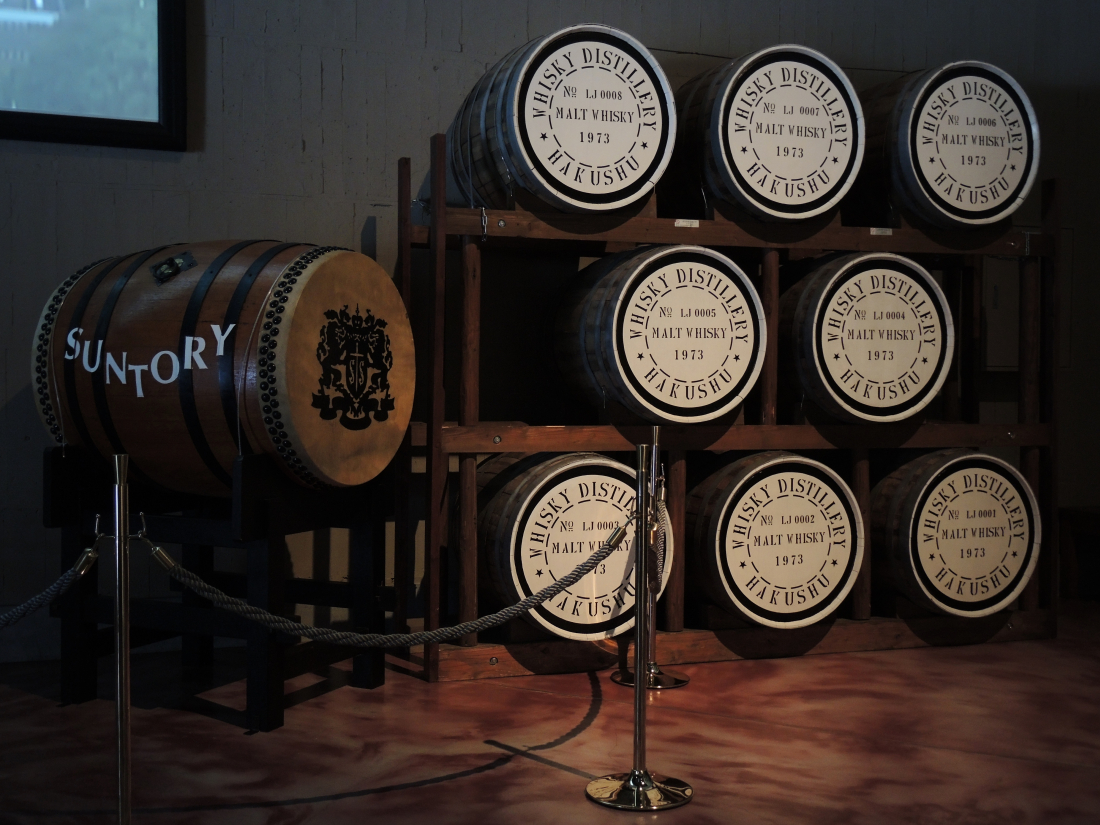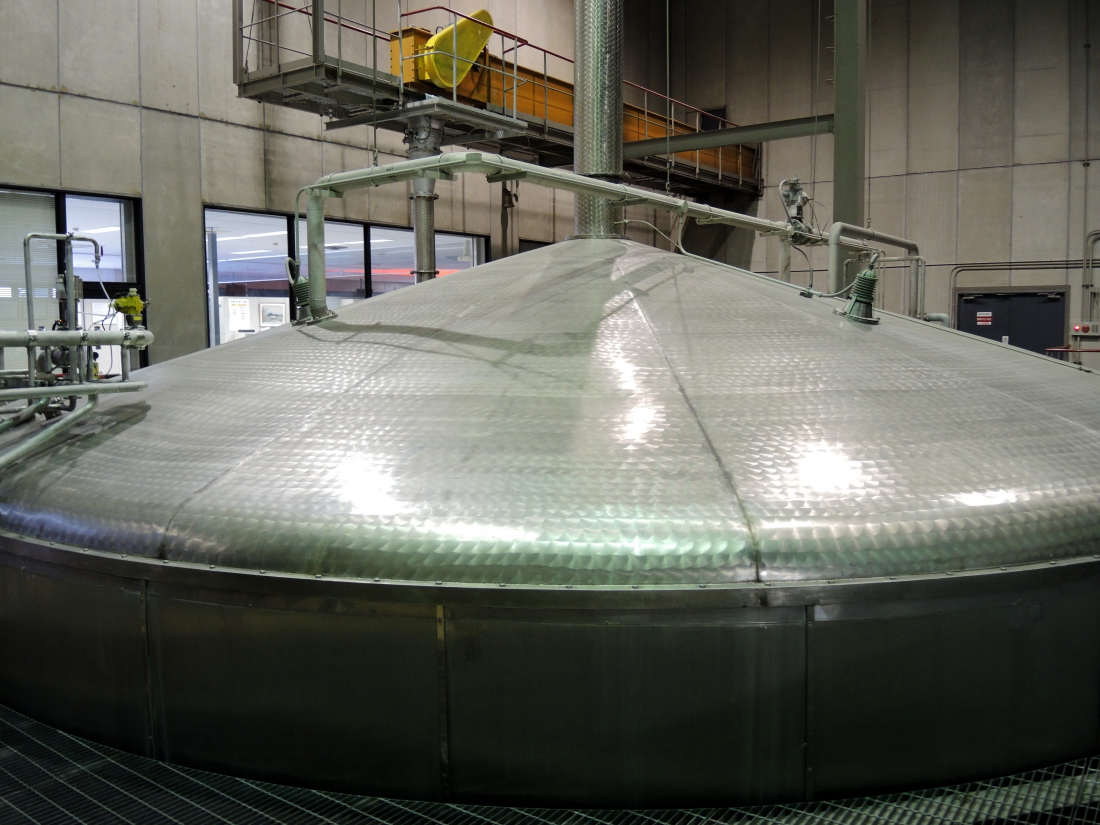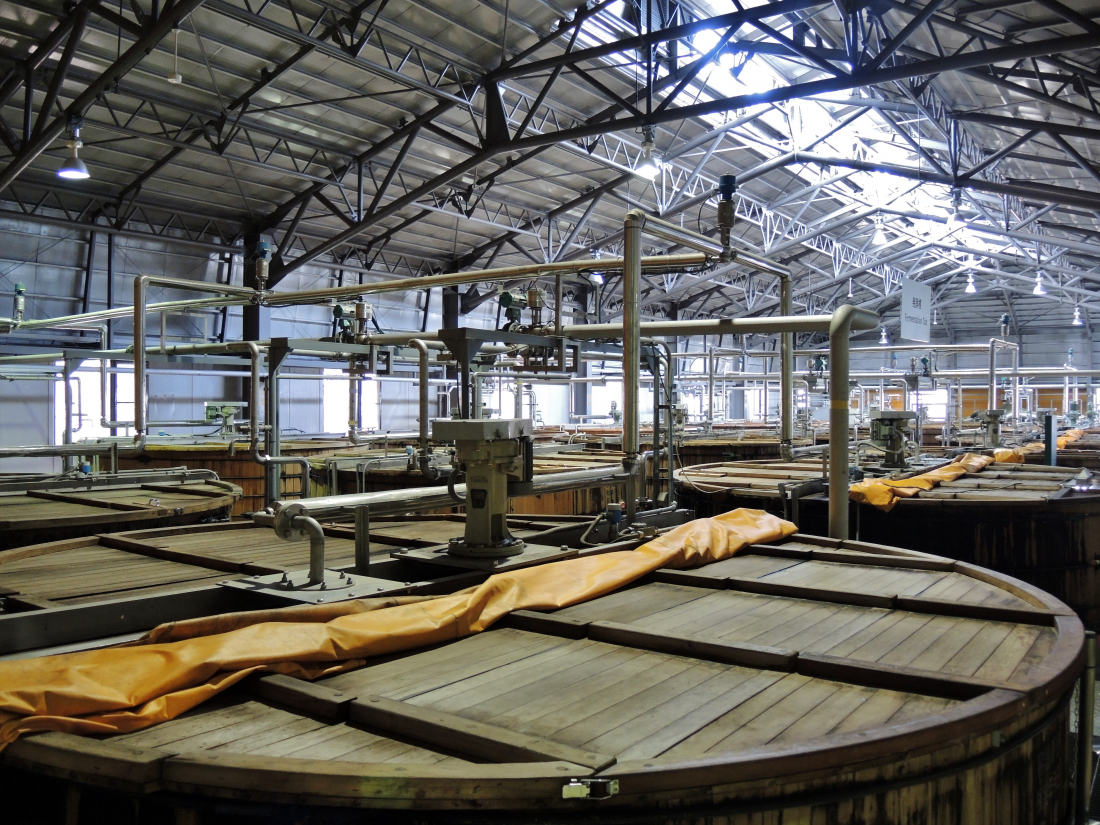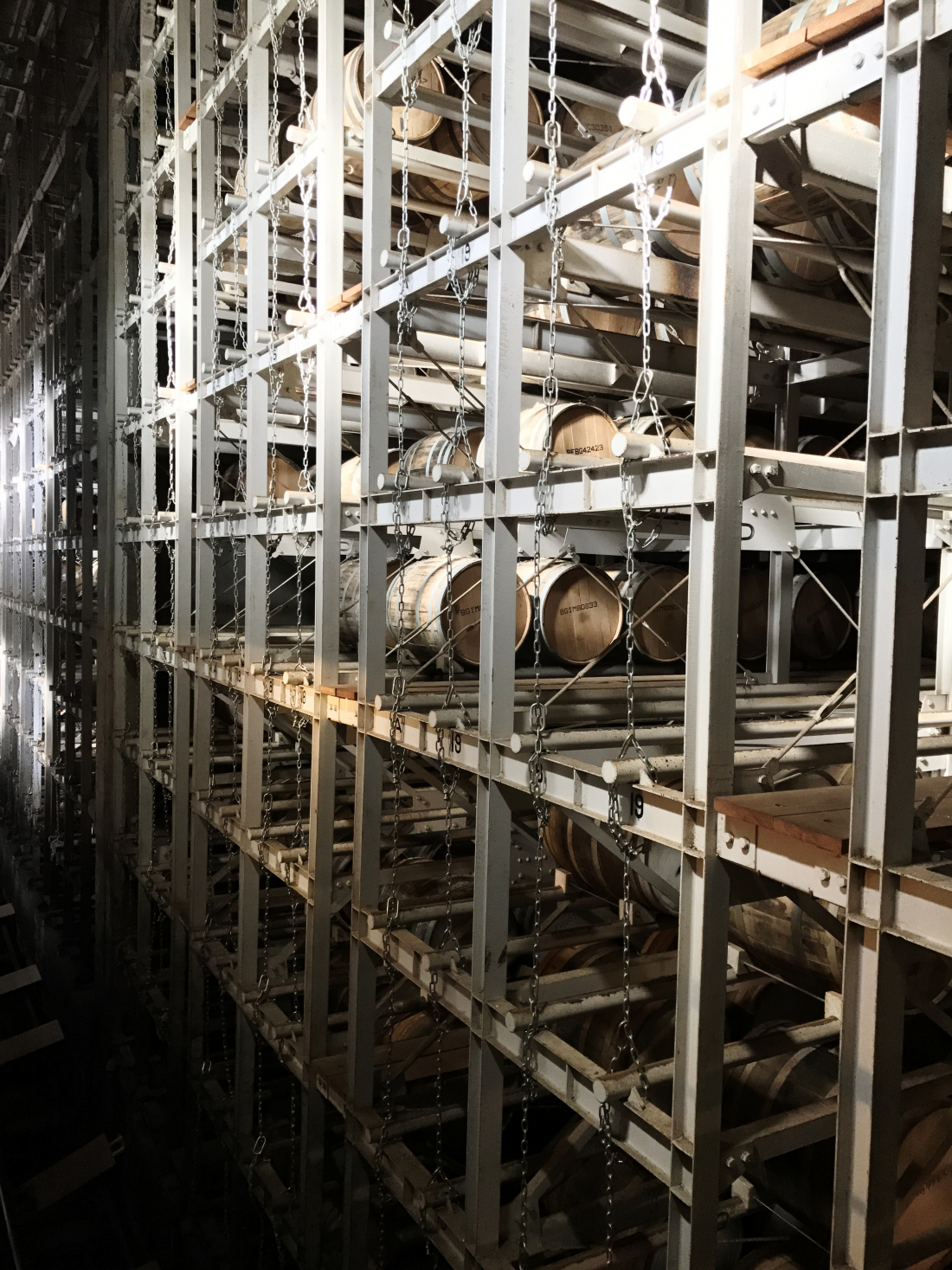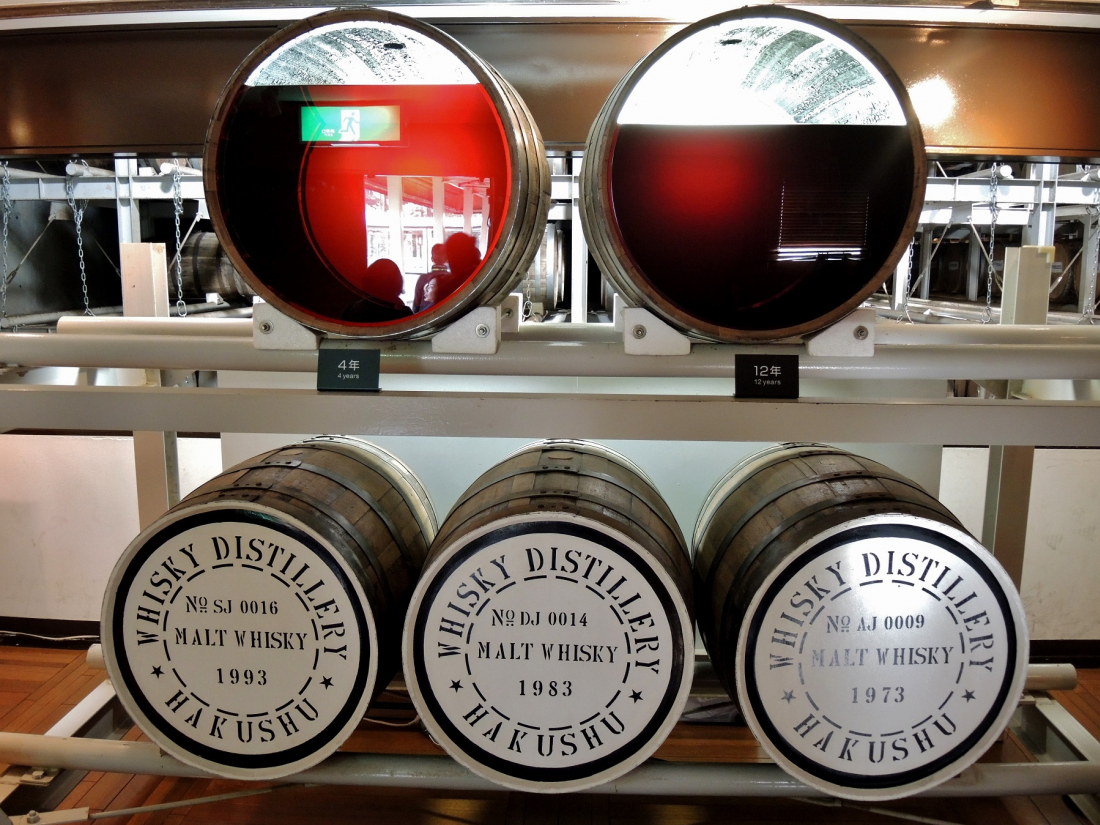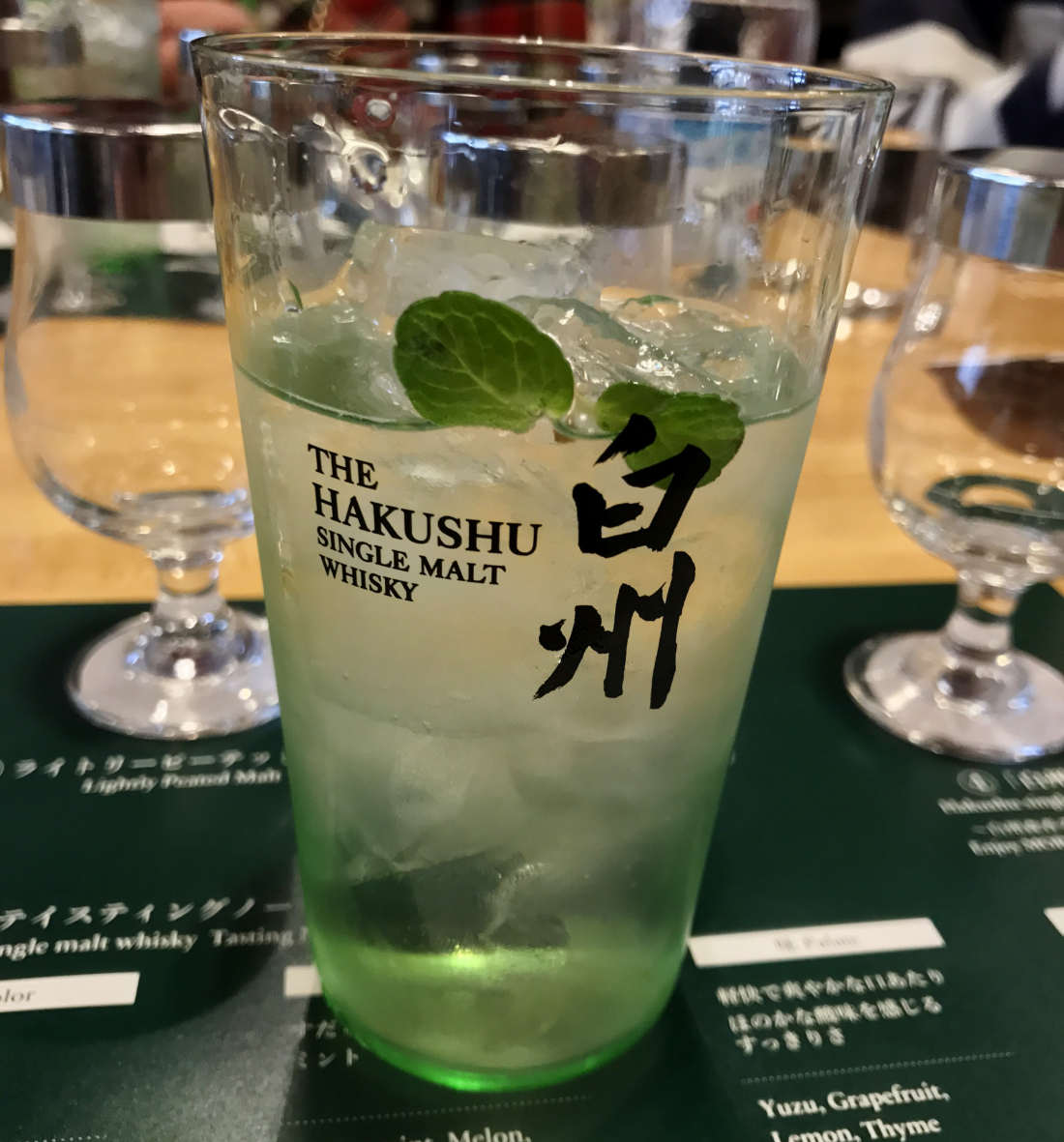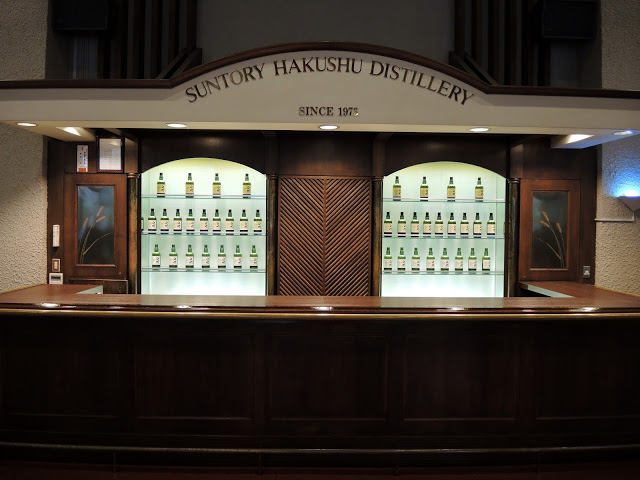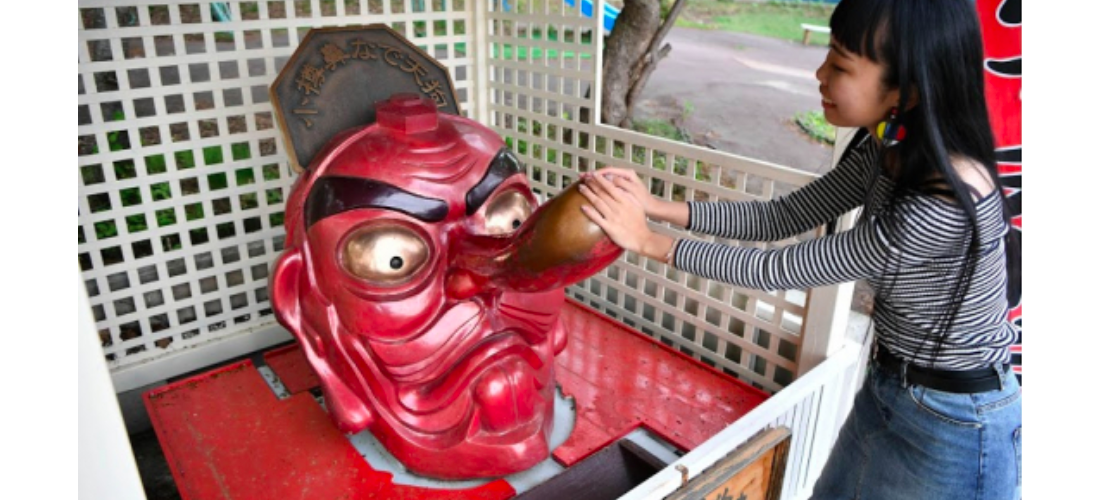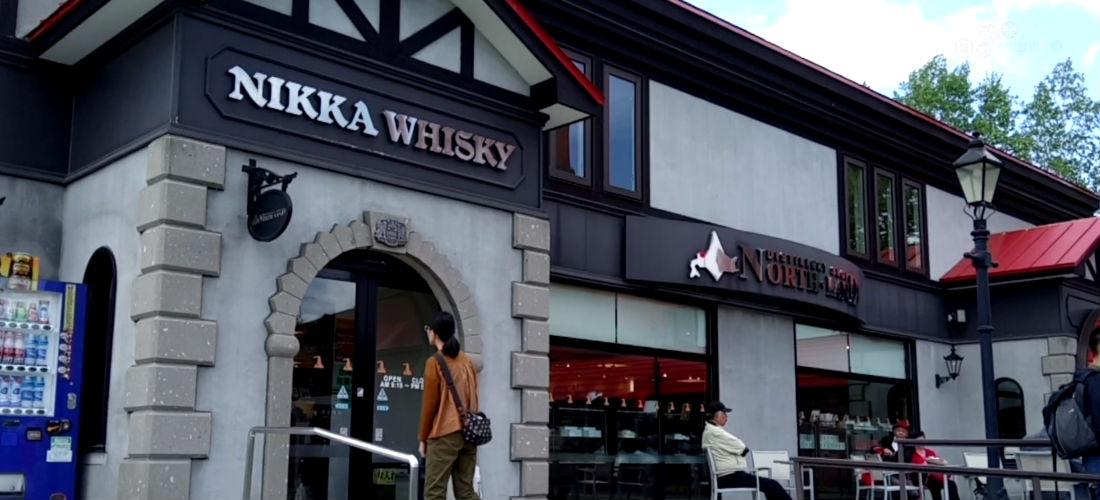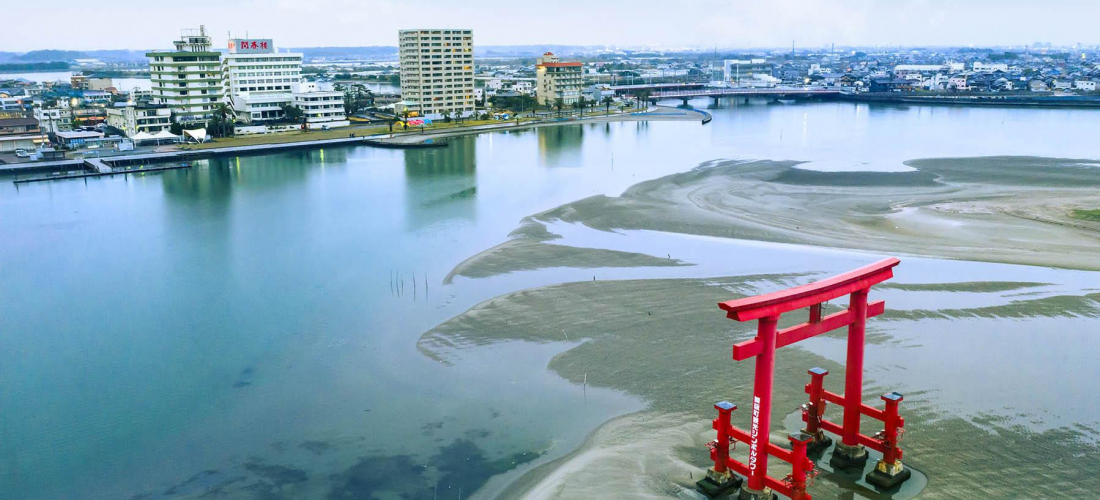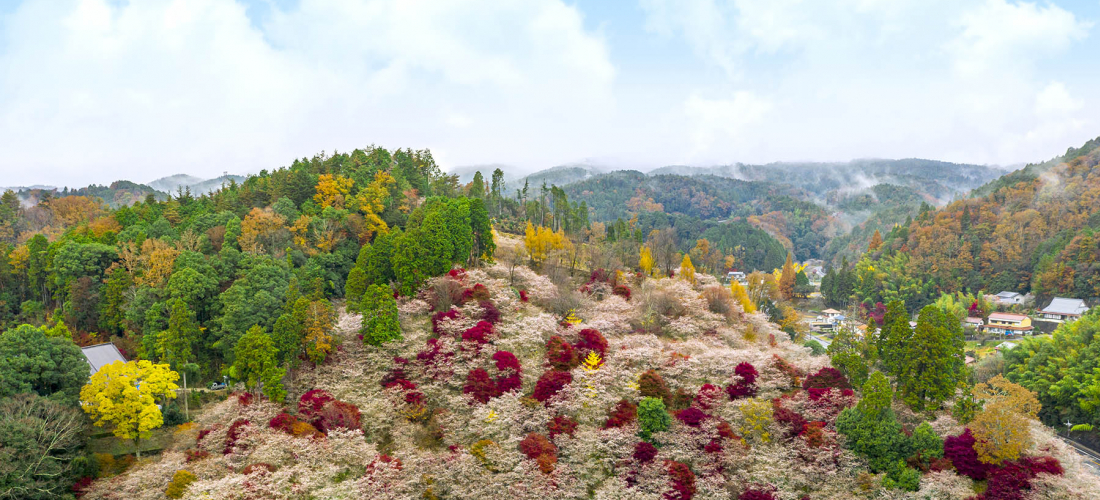When you think of Japanese alcohol, you normally think of sake. But Japan’s whiskey knowledge and appreciation have gradually been becoming world-famous!
Japanese whiskey is, in fact, becoming #1, surpassing Scotland! At the 2017 World Whiskies Awards, Japan won 3 awards in the competitive categories of the World's Best competition. TWO of those whiskies, might we add, are Suntory whiskies! So after knowing that, of course, we had to go check out the distillery for ourselves!!
A little bit of background~ The founder of Japanese whisky, Shinjiro Torii, wanted to create a perfect whisky that reflects the nature of Japan and the spirit of Japanese craftsmanship and did so way before his time. Construction for Japan's first ever malt whisky distillery began in 1923. Suntory's second distillery was located at the bottom of Mt. Kaikomagatake, in what’s known as the "Southern Japanese Alps". This particular location became special and unique (worldwide!) thanks to its location. The high altitude of such a clean and rich environment worked in favor with Hakushu’s purest water.
You could normally get to the Hakushu Distillery by the JR Azusa Limited Express train (on the Chuo Line) from JR Shinjuku Station (takes roughly 2 hours). However, since it was a holiday, we took a special train from Shinjuku! We rode the "Holiday Rapid View Yamanashi" (Holiday Kaisoku View Yamanashi)!! It's a double-decker train!! It was our first time ever riding one, so it was a cool experience! Besides the obvious appearance difference between the Holiday Rapid View Yamanashi and the Azusa, the Holiday Rapid View Yamanashi is not considered a limited express train (like Azusa), so the train fee is almost the same as taking a regular train!!!
★You can buy tickets at any JR Ticket Information Center in the station!
Holiday Rapid View Yamanashi doesn't run that regularly,
but if the JR people tell you the Holiday Rapid View Yamanashi isn't available,
you can still take the Azusa Limited Express (which you can buy tickets there as well).
Hoto is made by putting ultra-wide noodles (similar to udon noodles) into miso broth and cooking them along with various vegetables like kabocha (Japanese pumpkin/squash), snap peas, mushrooms, carrots, and more! Hoto looks like udon noodles, but if you ask any person from Yamanashi, they'll tell you it's COMPLETELY different. What's the difference though? Hoto noodles are made with the same dough used to make dumplings! Add that to a bunch of vegetables prepared in an iron pot, and you're in heaven.
★Houtou Matsukizaka (ほうとう松木坂)
Google Maps
*Roughly a 15 min walk from Kabuchizawa Station
⏰11am~9pm (Last Order 8:30pm)
Closed on Mondays
☎ 0551-36-2815
Houtou Matsukiza Info on Tabelog (Japanese)
Yamanashi Hakushu Whisky Distillery
Once you get in, you receive a lanyard with your scheduled tour time on it. You might notice people with different colors! Later we found out, that it's a way to identify who is able to drink and who isn't. Neon green is, as you guessed it, GREEN FOR GO! The other colors are pink and orange. One to identify the DD and the other to identify those who aren't old enough to drink.
The first floor of the Suntory Hakushu Distiller Whisky Museum is the tour starting area. If you still have time before your tour starts, take a quick peek at the "History of Japanese Whisky" area they have in a separate room to the right, which connects to "The Mysteries and Science Behind Brewing/Distillation" that is on the second floor. Each floor has something different, but the observation platform on the top floor is truly special. You can look out on the magnificent mountains of the Southern Japan Alps and Mt. Yatsugatake. They say you can EVEN see Mt. Fuji on a clear day! The first floor area where we waited for our tour to begin!
Hakushu Whisky Distillery's Process
Malt and Peated Malt
The fermented liquid generates "wash" (when the yeast converts the sugars in the wort into alcohol and carbon dioxide) and has many different characteristics because of the distinctive flavor components it includes. Taking the filtered wort, they add yeast for the fermentation process. They use wooden washbacks with superior heat retention at the Hakushu distillery, giving their whisky that special taste. They put a clear cover over a day 2 and day 3 fermentation washback so you can see the conditions of the process. The difference between the two was crazy when taking into consideration that it was only a one-day separation. Day two had so many bubbles whereas day three was a calmer batch. If you put your nose right up to the plastic cover, you could get a whiff of the wash, and man-oh-man, it was STRONG! It was like someone slapped you in the face. To this day I don't think that smell has left our noses hahah
The wash produced during the fermentation is then transferred to pot stills to undergo the distillation process twice, which results in a liquid with high alcohol concentration called "new make". What was cool is that each pot still was different in shape and size. When we first saw all these different pot stills, it didn't make much sense…why would they be different? Apparently, depending on the distinct flavors they want to bring out of the whiskies, they decide which pot still to put it in. The guide said that one in a handful of distilleries around the world does that sort of technique!
The SECOND you walk into the aging warehouse, your nose almost BURNS with the strong smell of what seemed like thousands of whisky casks around you. It was difficult to breathe at first, but you eventually get used to it….we wouldn't recommend staying there for too long though 😉 Rows of casks tucked in and sleeping, neatly organized by date and kind.
Rows of casks tucked in and sleeping, neatly organized by date and kind. The distilled "new make" is then placed in casks, where they slowly age and mature. It seemed a lot more complex than one would think. Details like the size, shape, material, and storage location of the casks, or the climate of the region, can make the same "new pot" mature differently. It makes sense, just something we never really thought of before!
The whisky on the top left is in its 4th year of maturation. While the cask on the right is in its 12th year! Look at the deepness of the red-ish color!! If you look at the bottom casks, you'll see different dates (1993, 1983, 1973) As you might've imagined, those are the dates the whisky was transferred into the casks.
At the end of the tour, you receive a small whisky drink seminar! There are four glasses on the placemat at your seat, and the guide goes along with you explaining each different whisky one by one. Then in the end, the guide taught us how to make "the perfect whisky highball".
2. Lightly Peated Malt – made with malt (alcohol content 43%)
3. Hakushu Single Malt Whisky – from Suntory's mountain distillery (alcohol content 43%)
4. Hakushu Single Malt Whisky (to make a 'Morikaoru Highball' with)
1. Fill a glass to the brim with ice and allow it to chill
2. Pour in the whisky and stir well
3. Top off the glass with more ice
4. Add soda (1 part whisky and 3 to 4 parts soda)
5. Stir once with a bar spoon
Garnish with lightly crushed mint leaves for added refreshment…….
and you've made your HAKUSHU MORIKAORU HIGHBALL!
(what they call a whisky & soda)
The tasting seminar lasts less than half an hour, which is plenty enough time to sit back, relax, and figure out which Suntory whisky fits you best! For those you don't or can't drink, Suntory makes all kinds of other delicious drinks that are not alcoholic. Here's a list of some of their drink products! Suntory Beverages (English) If you look at the top of the page, you can choose the region! We were really surprised to see Mountain Dew, Lipton Tea, and Gatorade in America!!! Japan is so great for one-day trips, so we really recommend you take a trip out to Kobuchizawa, Yamanashi! Remember to drink responsibly!
🥃Suntory Hakushu Distillery
Distillery Tour Information
Tour length: About 80 minutes
Google Maps
⏰Tour times depend on course ↠ Tour course info here (English)
*Reservations required! Only the distillery viewing is free.
*Reservations and Inquiries ↠ Yamanashi Distillery Website (English)
❕English audio guide available❕
Whisky Museum
⏰9:30am~4:30pm
"White Terrace" Restaurant
⏰10:30am~4:30pm (Last Order 4pm)
Seasonal Factory Shop
Hours depending on the season (open on weekends and holidays from April to Nov)
*How to get there
There is a free shuttle bus that takes you to and from.
You can get on at Kobuchizawa Station.
We recommend taking that! Suntory Shuttle Bus Info (English)
Details
NAME:Suntory Hakushu Distillery
MAP
2913-1 Torihara, Hakushu-cho, Hokuto-shi, Yamanashi
ACCESS:Kobuchizawa Station
CONTACT TEL:0551-35-2211
Hey there!! Thank's for checking out my page~★ I love exploring the crazy and funny sides of Japan as well as its hidden treasures.
COMMENT
FEATURED MEDIA
VIEW MORE 
A New Tokyo Animal Destination: Relax & Learn About the World’s Animals in Japan
#pr #japankuru #anitouch #anitouchtokyodome #capybara #capybaracafe #animalcafe #tokyotrip #japantrip #카피바라 #애니터치 #아이와가볼만한곳 #도쿄여행 #가족여행 #東京旅遊 #東京親子景點 #日本動物互動體驗 #水豚泡澡 #東京巨蛋城 #เที่ยวญี่ปุ่น2025 #ที่เที่ยวครอบครัว #สวนสัตว์ในร่ม #TokyoDomeCity #anitouchtokyodome

Shohei Ohtani Collab Developed Products & Other Japanese Drugstore Recommendations From Kowa
#pr #japankuru
#kowa #syncronkowa #japanshopping #preworkout #postworkout #tokyoshopping #japantrip #일본쇼핑 #일본이온음료 #오타니 #오타니쇼헤이 #코와 #興和 #日本必買 #日本旅遊 #運動補充能量 #運動飲品 #ช้อปปิ้งญี่ปุ่น #เครื่องดื่มออกกำลังกาย #นักกีฬา #ผลิตภัณฑ์ญี่ปุ่น #อาหารเสริมญี่ปุ่น

도쿄 근교 당일치기 여행 추천! 작은 에도라 불리는 ‘가와고에’
세이부 ‘가와고에 패스(디지털)’ 하나면 편리하게 이동 + 가성비까지 완벽하게! 필름카메라 감성 가득한 레트로 거리 길거리 먹방부터 귀여움 끝판왕 핫플&포토 스폿까지 총집합!
Looking for day trips from Tokyo? Try Kawagoe, AKA Little Edo!
Use the SEIBU KAWAGOE PASS (Digital) for easy, affordable transportation!
Check out the historic streets of Kawagoe for some great street food and plenty of picturesque retro photo ops.
#pr #japankuru #도쿄근교여행 #가와고에 #가와고에패스 #세이부패스 #기모노체험 #가와고에여행 #도쿄여행코스 #도쿄근교당일치기 #세이부가와고에패스
#tokyotrip #kawagoe #tokyodaytrip #seibukawagoepass #kimono #japantrip

Hirakata Park, Osaka: Enjoy the Classic Japanese Theme Park Experience!
#pr #japankuru #hirakatapark #amusementpark #japantrip #osakatrip #familytrip #rollercoaster #retrôvibes #枚方公園 #大阪旅遊 #關西私房景點 #日本親子旅行 #日本遊樂園 #木造雲霄飛車 #히라카타파크 #สวนสนุกฮิราคาตะพาร์ค

🍵Love Matcha? Upgrade Your Matcha Experience With Tsujiri!
・160년 전통 일본 말차 브랜드 츠지리에서 말차 덕후들이 픽한 인기템만 골라봤어요
・抹茶控的天堂!甜點、餅乾、飲品一次滿足,連伴手禮都幫你列好清單了
・ส่องมัทฉะสุดฮิต พร้อมพาเที่ยวร้านดังในอุจิ เกียวโต
#pr #japankuru #matcha #matchalover #uji #kyoto #japantrip #ujimatcha #matchalatte #matchasweets #tsujiri #말차 #말차덕후 #츠지리 #교토여행 #말차라떼 #辻利抹茶 #抹茶控 #日本抹茶 #宇治 #宇治抹茶 #日本伴手禮 #抹茶拿鐵 #抹茶甜點 #มัทฉะ #ของฝากญี่ปุ่น #ชาเขียวญี่ปุ่น #ซึจิริ #เกียวโต

・What Is Nenaito? And How Does This Sleep Care Supplement Work?
・你的睡眠保健品——認識「睡眠茶氨酸錠」
・수면 케어 서플리먼트 ‘네나이토’란?
・ผลิตภัณฑ์เสริมอาหารดูแลการนอน “Nenaito(ネナイト)” คืออะไร?
#pr #japankuru #sleepcare #japanshopping #nenaito #sleepsupplement #asahi #睡眠茶氨酸錠 #睡眠保健 #朝日 #l茶胺酸 #日本藥妝 #日本必買 #일본쇼핑 #수면 #건강하자 #네나이토 #일본영양제 #อาหารเสริมญี่ปุ่น #ช้อปปิ้งญี่ปุ่น #ร้านขายยาญี่ปุ่น #ดูแลตัวเองก่อนนอน #อาซาฮิ

Japanese Drugstore Must-Buys! Essential Items from Hisamitsu® Pharmaceutical
#PR #japankuru #hisamitsu #salonpas #feitas #hisamitsupharmaceutical #japanshopping #tokyoshopping #traveltips #japanhaul #japantrip #japantravel

Whether you grew up with Dragon Ball or you just fell in love with Dragon Ball DAIMA, you'll like the newest JINS collab. Shop this limited-edition Dragon Ball accessory collection to find some of the best Dragon Ball merchandise in Japan!
>> Find out more at Japankuru.com! (link in bio)
#japankuru #dragonball #dragonballdaima #animecollab #japanshopping #jins #japaneseglasses #japantravel #animemerch #pr

This month, Japankuru teamed up with @official_korekoko to invite three influencers (originally from Thailand, China, and Taiwan) on a trip to Yokohama. Check out the article (in Chinese) on Japankuru.com for all of their travel tips and photography hints - and look forward to more cool collaborations coming soon!
【橫濱夜散策 x 教你怎麼拍出網美照 📸✨】
每次來日本玩,是不是都會先找旅日網紅的推薦清單?
這次,我們邀請擁有日本豐富旅遊經驗的🇹🇭泰國、🇨🇳中國、🇹🇼台灣網紅,帶你走進夜晚的橫濱!從玩樂路線到拍照技巧,教你怎麼拍出最美的夜景照。那些熟悉的景點,換個視角說不定會有新發現~快跟他們一起出發吧!
#japankuru #橫濱紅磚倉庫 #汽車道 #中華街 #yokohama #japankuru #橫濱紅磚倉庫 #汽車道 #中華街 #yokohama #yokohamaredbrickwarehouse #yokohamachinatown

If you’re a fan of Vivienne Westwood's Japanese designs, and you’re looking forward to shopping in Harajuku this summer, we’ve got important news for you. Vivienne Westwood RED LABEL Laforet Harajuku is now closed for renovations - but the grand reopening is scheduled for July!
>> Find out more at Japankuru.com! (link in bio)
#japankuru #viviennewestwood #harajuku #omotesando #viviennewestwoodredlabel #viviennewestwoodjapan #비비안웨스트우드 #오모테산도 #하라주쿠 #日本購物 #薇薇安魏斯伍德 #日本時尚 #原宿 #表參道 #japantrip #japanshopping #pr

Ready to see TeamLab in Kyoto!? At TeamLab Biovortex Kyoto, the collective is taking their acclaimed immersive art and bringing it to Japan's ancient capital. We can't wait to see it for ourselves this autumn!
>> Find out more at Japankuru.com! (link in bio)
#japankuru #teamlab #teamlabbiovortex #kyoto #kyototrip #japantravel #artnews
Photos courtesy of teamLab, Exhibition view of teamLab Biovortex Kyoto, 2025, Kyoto ® teamLab, courtesy Pace Gallery

Japanese Makeup Shopping • A Trip to Kamakura & Enoshima With Canmake’s Cool-Toned Summer Makeup
#pr #canmake #enoshima #enoden #에노시마 #캔메이크 #japanesemakeup #japanesecosmetics

⚔️The Robot Restaurant is gone, but the Samurai Restaurant is here to take its place. Check it out, and don't forget your coupon!
🍣신주쿠의 명소 로봇 레스토랑이 사무라이 레스토랑으로 부활! 절찬 쿠폰 발급중
💃18歲以上才能入場的歌舞秀,和你想的不一樣!拿好優惠券去看看~
#tokyo #shinjuku #samurairestaurant #robotrestaurant #tokyotrip #도쿄여행 #신주쿠 #사무라이레스토랑 #이색체험 #할인이벤트 #歌舞伎町 #東京景點 #武士餐廳 #日本表演 #日本文化體驗 #japankuru #japantrip #japantravel #japanlovers #japan_of_insta

Japanese appliance & electronics shopping with our KOJIMA x BicCamera coupon!
用JAPANKURU的KOJIMA x BicCamera優惠券買這些正好❤️
코지마 x 빅 카메라 쿠폰으로 일본 가전 제품 쇼핑하기
#pr #japankuru #japanshopping #kojima #biccamera #japaneseskincare #yaman #dji #osmopocket3 #skincaredevice #日本購物 #美容儀 #相機 #雅萌 #日本家電 #일본여행 #면세 #여행꿀팁 #일본쇼핑리스트 #쿠폰 #일본쇼핑 #일본브랜드 #할인 #코지마 #빅카메라 #japankurucoupon

